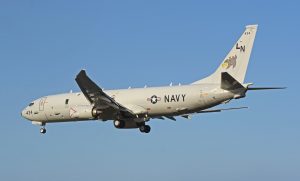The United States’ Navy’s Commander Task Force (CTF) 72 participated earlier this month in a joint certification drill with the Royal Australian Navy as part of the latter’s Fleet Certification Period 2020 (FCP20), a U.S. Navy Patrol Squadron 45 public affairs statement noted.
As part of the Australian FCP, a U.S. P-8A maritime surveillance aircraft joined a Royal Australian Air Force (RAAF) P-8A, alongside a Royal New Zealand Air Force (RNZAF) P-3 surveillance aircraft for readiness drills.
“Similar to the U.S. Navy’s FCP, the exercise focuses on warfighting at a high level and ensures operational fleet readiness,” the U.S. statement noted.
“Taking part in the Royal Australian Navy’s Fleet Certification Period has been an excellent opportunity to exercise interoperability with our Royal Australian Air Force and Royal New Zealand Air Force maritime patrol counterparts,” said Lt. Cmdr. Timothy Chesney, Patrol Squardon 45’s P-8A Posiedon officer in charge.
“Over the course of the detachment we conducted multiple scenarios of anti-submarine warfare, allowing for adequate mid-intensity warfare techniques.”
The P-8A is among the most advanced maritime patrol and surveillance aircraft currently in operation. With a combat range of 1,200 nautical miles and an on-board array of advanced avionics and sensors, including signals intelligence sensors, the P-8A is constant presence in the Indo-Pacific.
The P-8A is specialized for surface search radar operations and anti-submarine warfare. It also plays a role in shipping interdiction. The aircraft is armed with anti-ship missiles and torpedoes.
“As the U.S. Navy’s largest numbered fleet, 7th Fleet interacts with 35 other maritime nations to build maritime partnerships that foster maritime security, promote stability and prevent conflict,” a U.S. statement noted.
Prior to the participation of CTF 72 in the RAN’s FCP20 earlier in the month, the two sides’ air forces also coordinated in February, alongside the Japanese Air Self-Defense Force, in the Cope North 2020 humanitarian training exercise.
The U.S. Air Force, Royal Australia Air Forces, and the Japan ASDF conducted a simulation over 17 days between February 12 and 28 to explore interoperability and coordination in humanitarian operations.
U.S. Air Force Col. Scott Rowe, the director of the Cope North 2020 exercise, described this year’s iteration as “historic.”
“Instead of individualizing control groups nationally, we performed as a multinational joint task force and integrated the three nations along functional lines.”
As allies, the United States and Australia conduct regular and varied training. The two sides’ conduct the biennial Talisman Saber exercise, which is among the largest overseas U.S. drills, often with multilateral participation from other partner countries, including Japan, New Zealand, Canada, and the United Kingdom.
































